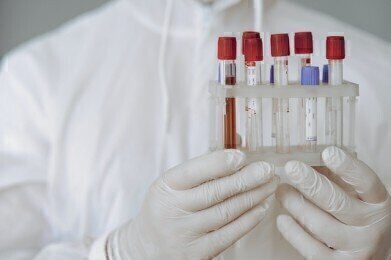Laboratory Products
What's the Right Temperature for Transporting Samples?
Mar 02 2022
Of all the factors that must be considered when transporting samples, temperature is one of the most important. From blood and human serum to soil and plant matter, temperature can affect both the physical and chemical stability of specimens. Once the integrity of a sample has been compromised it’s no longer suitable for analysis and can’t offer reliable results.
So, what’s the right temperature for transporting samples? There’s no one-size-fits-all answer as optimal transport temperatures can vary significantly depending on the sample. That said, there are benchmark recommendations for common sample types:
Transport temperatures for blood samples
Most laboratories recommend storing and transporting blood samples at temperatures of between 4°C and 25°C. Ideally, specimens should arrive at the laboratory within three to four days to ensure biomarker concentrations aren’t altered.
While dry ice is the preferred method of transport when moving blood samples between hospitals and testing laboratories, studies suggest gel packs can be just as effective. A recent article published in the journal Shock maintains gel packs are a cost-effective way to maintain temperatures of 4°C and preserve the integrity of “inflammatory, coagulation, endothelial dysfunction, and oxidative stress biomarkers”.
Transport temperatures for serum
Most serum samples can be transported at temperatures of between 2°C and 8°C, provided they reach the testing laboratory within one week. Refrigerated transport is ideal though dry ice can also be used. For longer periods of time the recommended temperature for storing serum samples is -20°C.
Transport temperatures for water
Water collected for bacteriology testing should be transported at temperatures of around 4°C. Anything higher or lower could compromise the integrity of the sample and risk killing bacteria.
Transport temperatures for chemical testing
4°C is also the recommended temperature for transporting samples that will undergo chemical testing.
Transport temperatures for infectious samples
As well as adhering to specialised health and safety regulations, it’s important to consider temperature when transporting infectious samples. For example, the Centers for Disease Control and Prevention (CDC) recommends the following guidelines when transporting respiratory specimens, including COVID-19 tests:
“Store respiratory specimens at 2-8°C for up to 72 hours after collection. If a delay in testing or shipping is expected, store specimens at -70°C or below. Store extracted nucleic acid samples at -70°C or lower.”
Senders and couriers must also ensure specimens packaged, labelled and shipped in accordance with local and international guidelines. For example, in the USA Category A infectious samples must meet U.S. Department of Transportation’s Hazardous Materials Regulations, as well as the International Air Transport Association Dangerous Goods Regulations.
Temperature isn’t the only factor to consider when transporting samples. Find out more about the collection and storage protocols, health and safety precautions, freeze drying and more in ‘Sample Transportation in Laboratory Explained.’
Digital Edition
ILM 49.5 July
July 2024
Chromatography Articles - Understanding PFAS: Analysis and Implications Mass Spectrometry & Spectroscopy Articles - MS detection of Alzheimer’s blood-based biomarkers LIMS - Essent...
View all digital editions
Events
Jul 28 2024 San Diego, CA USA
Jul 30 2024 Jakarta, Indonesia
Jul 31 2024 Chengdu, China
ACS National Meeting - Fall 2024
Aug 18 2024 Denver, CO, USA
Aug 25 2024 Copenhagen, Denmark

-(1)-(1).jpg)


24_06.jpg)













